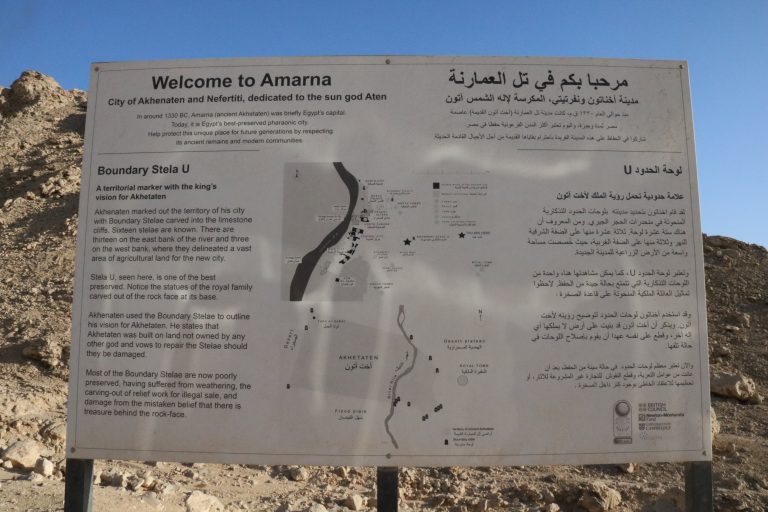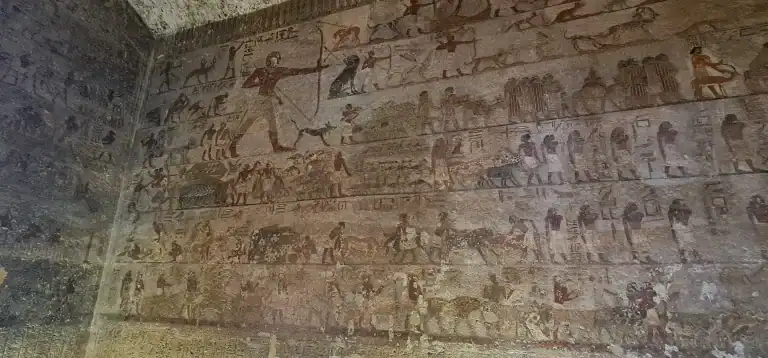When most travelers think of Egypt, their minds immediately wander to the Pyramids of Giza or the temples of Luxor. Yet, tucked away along the Nile Valley lies a destination often overlooked but equally rich in history, culture, and natural beauty: Minya. Known as the “Bride of Upper Egypt,” Minya is a place where ancient history meets vibrant modern life, offering travelers a unique experience far from the typical tourist routes.
From the royal city of Akhenaten to the sacred animal necropolis and the stunning tombs of Bani Hassan, Minya unfolds a story that spans pharaonic, Greco-Roman, Coptic, and Islamic eras. Add to that the warmth of its people, lush farmlands, and authentic Egyptian charm, and you have a destination that promises unforgettable memories.
Minya Location and Overview
Located about 245 kilometers south of Cairo, Minya stretches along the eastern and western banks of the Nile. Its strategic location made it a flourishing center throughout Egypt’s history, especially during the Middle Kingdom and Amarna Period.
Today, Minya is both a bustling modern city and a gateway to some of the most remarkable archaeological sites in Egypt. With a mix of fertile farmlands, ancient ruins, and cultural diversity, Minya offers travelers a comprehensive Egyptian experience.
Tell El Amarna – The Lost City of Akhenaten

One of the most fascinating attractions in Minya is Tell El Amarna, the short-lived capital city built by Pharaoh Akhenaten in the 14th century BC. Dedicated to the worship of Aten, the sun disk, Amarna was revolutionary in both its art and religious philosophy.
Though much of the city lies in ruins today, the remains of temples, palaces, and tombs provide deep insight into this unique period of Egyptian history. Visitors can explore the Royal Tomb of Akhenaten, the North and South Tombs of officials, and other archaeological sites that shed light on this visionary yet controversial pharaoh.
Tuna El-Gebel - The Necropolis of Sacred Animals

Another highlight of Minya is Tuna El-Gebel, the ancient necropolis famous for its catacombs filled with sacred animal burials. Dedicated primarily to the god Thoth, thousands of mummified ibises and baboons were discovered here, reflecting the religious practices of the late Pharaonic and Greco-Roman periods.
Among the notable structures in Tuna El-Gebel are the tomb of Petosiris, decorated with a unique blend of Egyptian and Greek art styles, and the underground galleries housing animal mummies. The site is a testament to Egypt’s spiritual traditions and artistic diversity.
Bani Hassan - The Elite Tombs of the Middle Kingdom

Bani Hassan, located on the east bank of the Nile in Minya, is home to some of the most spectacular rock-cut tombs from the Middle Kingdom (2055–1650 BC). These tombs belonged to provincial governors and high-ranking officials and are renowned for their vivid wall paintings depicting scenes of daily life, hunting, wrestling, and military activities.
The artistry in Bani Hassan’s tombs provides a rare glimpse into provincial life outside the royal courts, making it a must-visit destination for anyone exploring Minya. The climb up to the tombs also rewards travelers with breathtaking views of the Nile Valley below.
Coptic and Islamic Heritage in Minya

Minya is not just about pharaonic ruins; it also boasts significant Coptic and Islamic heritage. The region is dotted with ancient monasteries and churches that played a pivotal role in early Christianity, such as the Monastery of the Virgin in Gabal El-Tair, believed to be a site visited by the Holy Family during their flight into Egypt.
Islamic monuments in Minya include mosques, Ottoman-style houses, and old markets that reflect the city’s long-standing cultural diversity. This blend of traditions adds depth to any visit, as travelers can explore Egypt’s spiritual history across multiple eras.
The People and Culture of Minya
The true heart of Minya lies in its people. Known for their hospitality and kindness, the locals are proud of their heritage and eager to share it with visitors. Agriculture is a central part of life, with the lush fields of sugarcane, cotton, and wheat surrounding the city.
Minya’s culture reflects a harmony of ancient traditions and modern practices. Local festivals, music, and cuisine bring vibrancy to the region, offering travelers authentic experiences that go beyond sightseeing.
Why Visit Minya?
Visiting Minya offers travelers a chance to explore Egypt without the crowds of more famous sites. It combines history, spirituality, and culture in one destination. Highlights include:
Walking through the ancient city of Amarna.
Exploring unique Greco-Roman tombs and temples.
Experiencing authentic Egyptian rural life.
Visiting early Christian monasteries and historic mosques.
Enjoying the natural beauty of the Nile Valley.
For those seeking a deeper connection with Egypt’s past and present, Minya is an ideal destination.
Facts About Minya
Here are some interesting facts about Minya:
Nickname: Known as “The Bride of Upper Egypt” due to its beauty and cultural richness.
Holy Family Route: Minya is believed to be one of the stops of the Holy Family during their journey through Egypt.
Greco-Roman Legacy: Tuna El-Gebel in Minya houses art that blends Egyptian and Greek styles, rare in Egypt.
Agricultural Hub: Minya is one of Egypt’s most fertile regions, contributing heavily to national agriculture.
Blend of Heritage: The governorate holds treasures from Pharaonic, Greco-Roman, Coptic, and Islamic eras.
How Desert Cruise Travel Enriches Your Visit to Minya?
Exploring Minya independently can be overwhelming due to the remote locations of its archaeological sites. This is where Desert Cruise Travel comes in:
Expert Guides: Knowledgeable professionals bring history and culture to life.
Comfortable Transportation: Safe and reliable transfers between sites.
Tailored Itineraries: Custom tours that match your interests, whether historical, cultural, or spiritual.
Local Insights: Opportunities to meet locals and experience authentic Egyptian traditions.
Stress-Free Experience: Everything from logistics to accommodations is handled for you.
With Desert Cruise Travel, your journey to Minya becomes an immersive adventure rather than just a sightseeing trip.
Frequently Asked Questions about Minya
Conclusion
Minya is a destination where history, spirituality, and authentic culture converge. From the revolutionary city of Akhenaten to the breathtaking tombs of Bani Hassan and the sacred grounds of Tuna El-Gebel, Minya promises experiences that leave a lasting impression.
If you are ready to step off the beaten path and discover one of Egypt’s most fascinating regions, let Desert Cruise Travel guide you on an unforgettable journey through Minya. This is more than a trip it’s a chance to walk through history, connect with culture, and experience the warmth of Egypt in its purest form.




